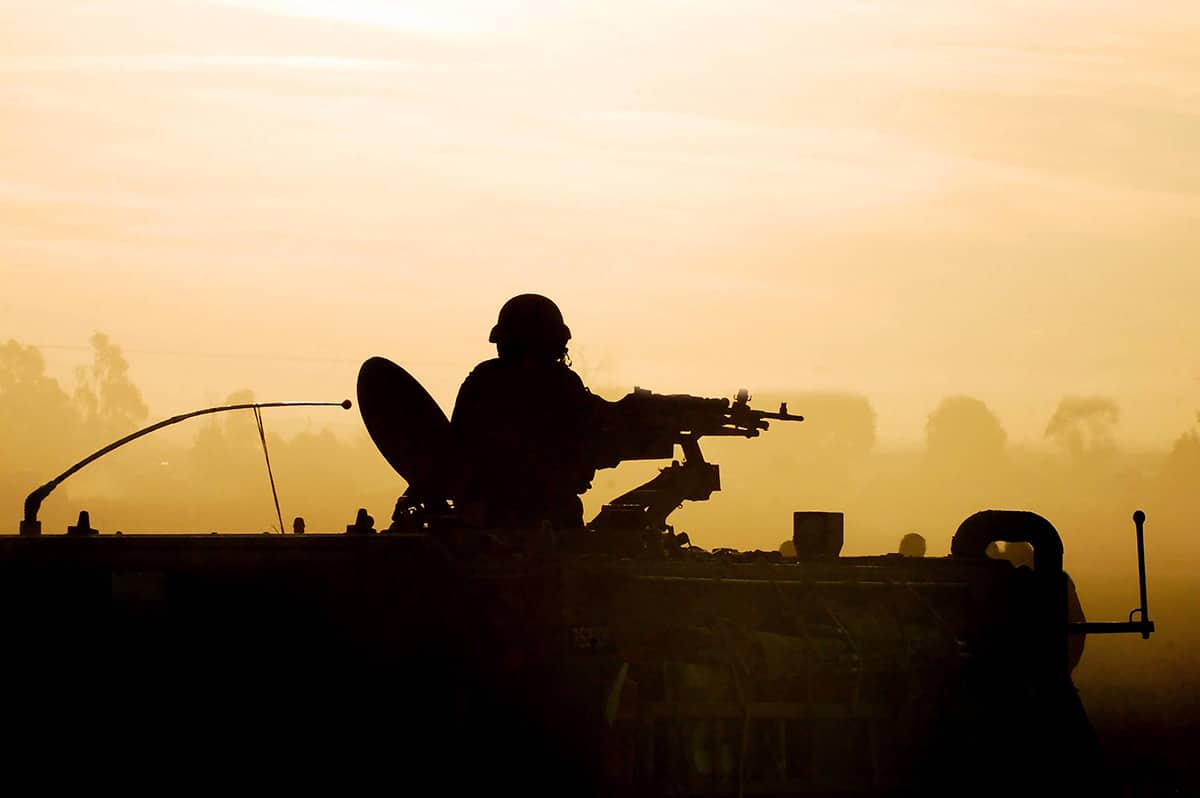
In the days of gloom that followed October 7, 2023, it was unclear exactly how we would manage to win the war. Now, with Hamas already shattered as a military organization and with Hezbollah being heavily hit, not only can an Israeli victory be glimpsed on the horizon but a time of thriving, initiated upon the Day After, can be dreamt of.
Despite the optimism that is developing, we mustn’t forget that some important battles and many dangers still await us and that we cannot unilaterally determine how the Swords of Iron War will yet develop.
Most decisions were right: The war in retrospect
The October 7 disaster wrought great confusion and uncertainty, but one thing was certain from the start: This war will take time. There were two main reasons — first, that the Gaza Strip was full of tunnels and that the Hamas infrastructure there would require a complex, systematic effort of dismantling; and second, that among the ground forces the level of strength and armament was insufficient for intensive fighting on several fronts at once. In recent decades, the IDF had closed down a number of reserve battalions and the army had a relatively small stock of weaponry at hand. Israel had to resolve itself to mount a counterattack in Gaza while mounting nothing more than a defense on the other fronts. Because of that gradation of fighting, it was only after 11 months that the State of Israel shifted the campaign’s center of gravity from the south to the north.
Despite the optimism that is developing, we mustn’t forget that some important battles and many dangers still await us and that we cannot unilaterally determine how the Swords of Iron War will yet develop.
From examination of the circumstances in which we entered the war, it appears that the fighting was handled successfully for the most part and that most of the decisions were correct. However, there are at least three points where it would have been advisable to act differently.
First, it would have been better to maintain the same operational pressure that we had applied to Hamas at the start of the war. The military dismissed large numbers of reservists relatively early, and it may be that if it had not done so, we would have been able to pressure Hamas more strongly and shorten the fighting in Gaza.
Second, the incursion into Rafah and the Philadelphi Corridor was mounted too late. Hamas long enjoyed an oxygen supply in the form of control over the Corridor, which enabled it to fortify itself through the Sinai. If we had cut off that oxygen supply in the first days of the war, the entire course of fighting would have looked different.
The third point, which to this day has not been properly addressed, is the control over humanitarian aid that enters Gaza. The aid is intended for the citizenry but in practice it falls into the hands of Hamas operatives and thus it enables Hamas both to strengthen itself and to preserve its standing as the authority governing the Gazan populace.
Shock and awe: The current state of the war
The southern front
At the start of the war, the Southern Command estimated that it would need a year to dismantle Hamas as a military organization. Today we have indeed reached the point where Hamas has lost most of its military capacity, as shown by its markedly reduced ability to launch rockets into Israeli territory.
The nature of the fighting in Gaza today differs from what we saw at the war’s beginning. In the first months, the IDF was obliged to operate at great intensity, with a large deployment and with coordinated attacks. In addition, it needed to operate systematically — that is to say, street by street and neighborhood by neighborhood — in order to eliminate the terrorists and destroy the infrastructures. Today, most of the fighting in Gaza is carried out in pinpoint incursions and in precision attacks together with air force personnel. At the same time we see systematic elimination of senior Hamas officials. Most senior officials of the organization, including Ismail Haniyeh and Mohammed Deif, have already been eliminated. The loss of senior officials weakens the organization not only militarily but in terms of governance as well, and it is an important aspect in preventing Hamas from regaining strength later.
The northern front
During the past month, most of the fighting has been concentrated at the Lebanese border. We see a method of operation in the north that is reminiscent of the military doctrine developed by the USA in the late 1990s, known as “Shock and Awe.” The idea behind the doctrine is to frighten and weaken the enemy until it loses the will to fight. In that spirit, almost all the senior officials of Hezbollah, foremost among them Hassan Nasrallah, were already eliminated early in the fighting.
Furthermore, the IDF is undermining Hezbollah with a series of unusual operations. Especially prominent are the attacks via the pagers and walkie-talkies of the organization’s operatives as attributed to Israel. Those operations struck thousands of terrorists simultaneously — most of them from the Radwan Force, Hezbollah’s elite fighting unit. Over and above the physical harm to the terrorists, the operation also spread powerful intimidation and proved how penetrable the organization was. While all that was happening, we were also witness to unceasing attacks by the Israel Air Force, which battered the Hezbollah infrastructures and deprived the organization of some significant capabilities.
Israel hoped that such a sequence of operations would compel Hezbollah to retreat completely from southern Lebanon and to stop firing at Israel — thus enabling the residents of northern Israel to return to their homes. Still, Israel took into account that Hezbollah might continue fighting nonetheless, in which case a ground operation in Lebanon would be necessary.
That operation, if it goes forward, will differ from the operation that we saw in Gaza. On the one hand, southern Lebanon is significantly less densely populated than Gaza and most of its residents have already fled, so that there will be less friction with the locals. On the other hand, southern Lebanon’s landscape is liable to present a greater challenge, with its many hills and abundant foliage. It must be stressed that Hezbollah, like Hamas, has upgraded its subterranean capabilities; and we know that many of the organization’s strategic assets — including arms factories and bases — are underground. Thus southern Lebanon too portends difficult fighting, at least some of it in tunnels.
You can’t stop a tsunami with a teaspoon: Important conclusions from the war’s first year
On October 7 last year, we suffered a catastrophe. But that catastrophe awakened Israel from a long sleep and made Israel aware of what sizeable threats it faces. With time, that awareness has eroded among some of the leadership and public; and today there are those who call upon us to return to a policy of keeping our eyes closed.
In order that Israel remain secure over the coming generations, the State of Israel — leaders and society alike — must take action at a number of levels:
- Strictly preserving external security: First of all, we must confront the immediate threats from Hamas, Hezbollah, and Iran. But there’s more to the story. We must revise our outdated national security doctrine and understand that “deterring, alerting, and defeating” does not sum up the essentials. Israel’s security doctrine must include an element of zero tolerance for terrorist armies at our borders, and of nipping any terrorist force in the bud. It is unthinkable that we tolerate a situation where 50 thousand armed terrorists are located 100 meters from our border fence. That is a tsunami, and you can’t stop a tsunami with a teaspoon. Or a tablespoon.
- Strengthening governability and internal security: In the shadow of the external threats, we must not forget that the Arab–Israeli dispute, which has dogged us for 100 years now, is still alive domestically. The State of Israel must deal with the matter of governance within the country and ensure that all Jewish residents of Israel may feel safe in their country.
- Battling delegitimization and anti-Semitism: For years we have been confronted with inciteful attempts to delegitimize Israel and stir up anti-Semitism all over the world, and since the outbreak of war the campaign has only intensified. The State of Israel must subdue the forces that that are generating anti-Israeli activity at the UN and at the courts in the Hague, encouraging demonstrations, and bringing anti-Semitism into the streets and universities — forces led by the Palestinian Authority. To our regret, the State of Israel has not yet formulated a strategy for concrete action in the face of this severe problem.
- Instilling a common national ethos: We must unite the nation under the basic values on which the State of Israel was founded and under the Zionist–Jewish ethos nobly expressed in Israel’s proclamation of independence. Solidarity is not a luxury but a requirement for ensuring our security and survival, because without a set of values and an ethos, no tanks or airplanes will avail.
- Establishing an enlisted society— In the State of Israel, not serving is out of the question. Therefore we must establish an enlisted society here, in which all citizens of the state participate. At the same time, it must be stressed that this does not mean turning into Sparta. Israel is not a nation that glorifies power and violence. On the contrary, this nation lionizes culture and innovation. The balance is an important one, which we must all practice as individuals and as a society.
As we triumph, so shall we thrive: Israel on the Day After
The victory that we found difficult to visualize a year ago is taking form before our eyes, even though the pathway is a long one. Today, after the many drubbings we’ve delivered to Hamas and Hezbollah, most of the Israeli public believes that we can attain victory on all the fronts.
We of the IDSF movement do not wish to content ourselves with victory in itself. We hope to see this land thrive and grow. Our view is that the more greatly Israel triumphs in the war, the more greatly it will thrive after the war. When the states of the world, including our enemies’ states, see our strength displayed, they will be spurred to sign peace agreements and establish strong coalitions with us. Moreover, our economy will recover and burgeon. There will be mass immigration to Israel and we will also see the birthrate surge as it generally does after wartime.
In order to reach those optimal days, we must maintain patience, determination, and solidarity, and not ease off the gas pedal until we have passed successfully through all the challenges that lie before us.




